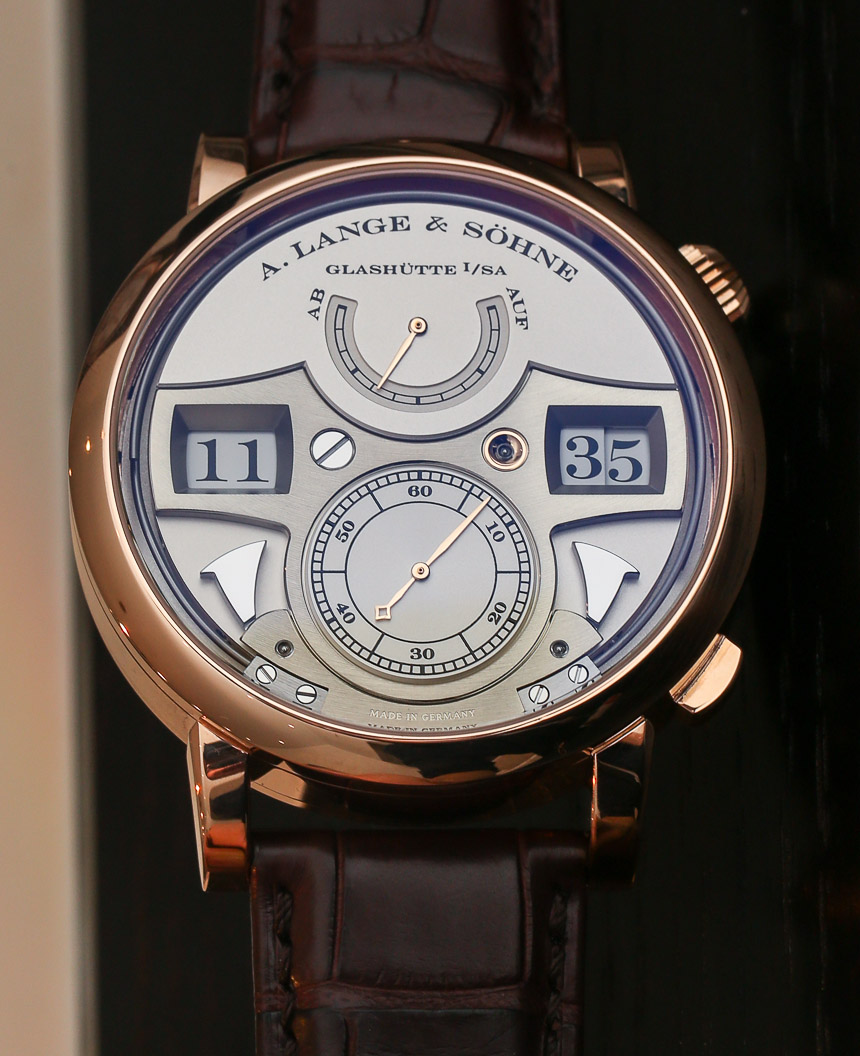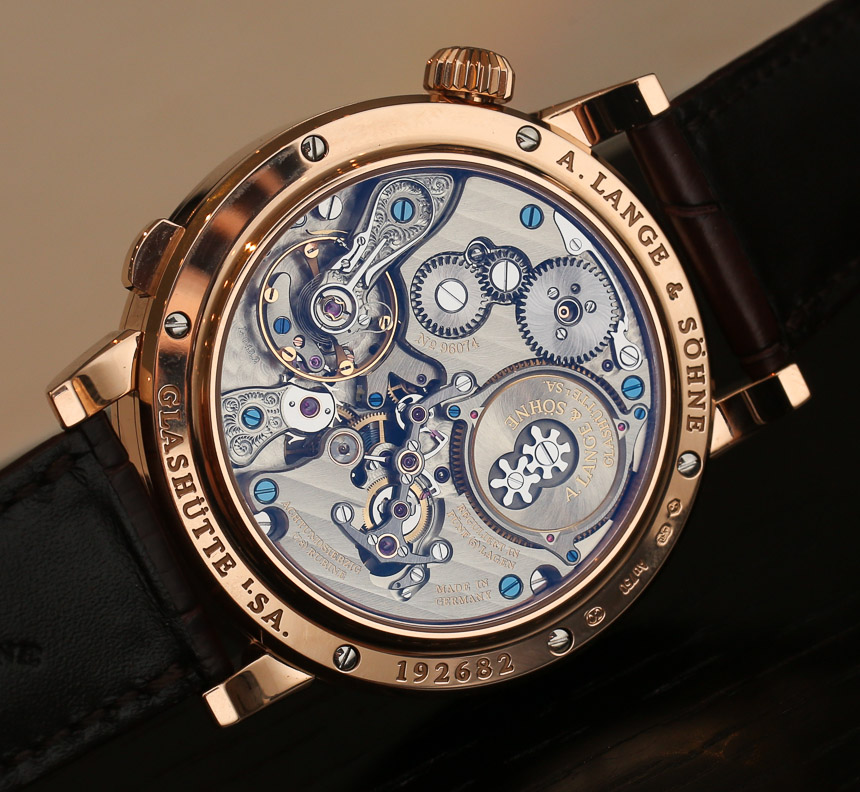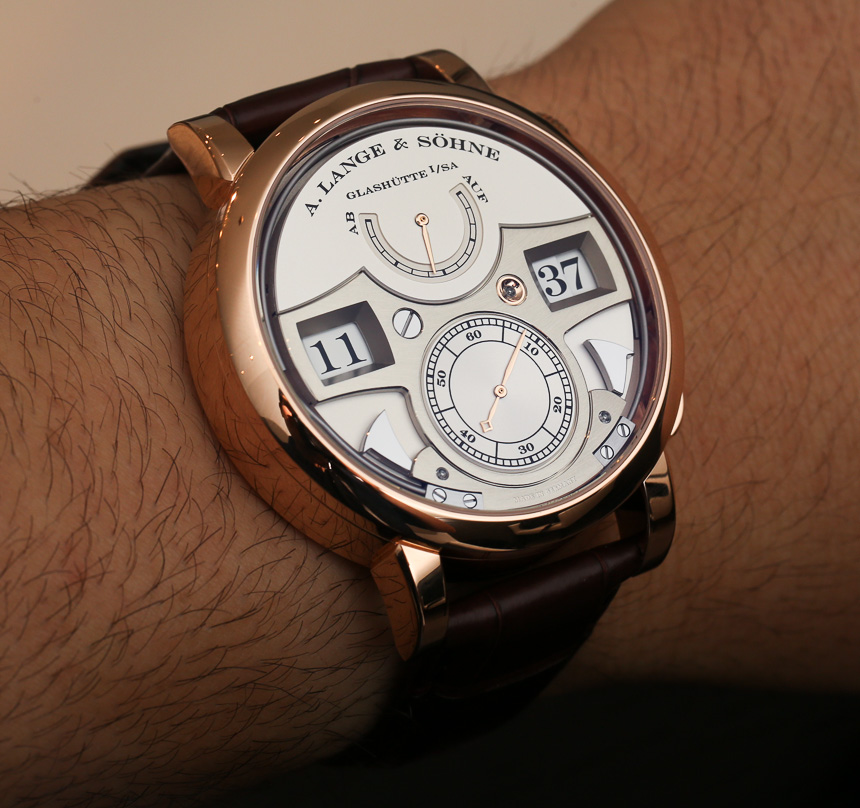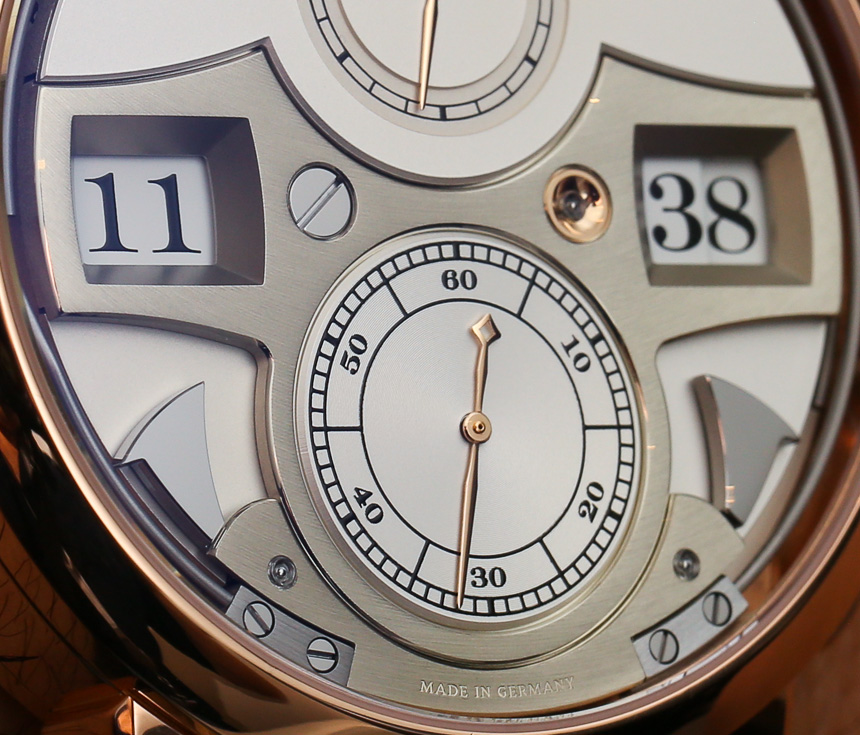
It was in 2009 that A. Lange & Sohne released the original Zeitwerk watch and, oddly enough, I’ve never fully covered it on aBlogtoWatch, despite having a great fondness for the piece. Five years later in 2014, and suddenly we have our first hands-on look at a timepiece I’ve always loved. Better late then never, right? It just goes to show that there are timepieces I admire which seem to fall through the cracks for one reason or another. There have been a range of Zeitwerk models since then, including the recent Zeitwerk Striking, which takes the original model and adds a sonnerie complication.
What many people don’t know is that the Zeitwerk Striking, while visually very similar to the standard Zeitwerk, is actually a few millimeters wider. To incorporate the additional components as well as hammers and gong on the dial the Zeitwerk Striking is 44.2mm wide versus the 41.9mm width of Zeitwerk. At over 44mm wide, that makes the Zeitwerk Striking one of the largest and coolest A. Lange & Sohne timepieces produced. It isn’t the largest, but it is perhaps the biggest one that you could easily wear on a daily basis. It also happens to be perhaps be the only Lange watch I would own if I could choose just one.


I’ve never been one to select the typical or cliche choice–ever. For aficionados, A. Lange & Sohne is increasingly becoming a logical choice brand, but the unorthodox Zeitwerk family is still favorably unique given all the “easy choices” offered by the brand. I say this, because I am thinking that if I were given a choice to only own a single A. Lange & Sohne watch, it might very well be something in the Zeitwerk range–perhaps the Zeitwerk Striking. In addition to being an easy to read digital watch (with a mechanical heart of course), it is also complicated, distinctive in its appearance, and comfortable. Furthermore, it has an uncommon high-end complication that is integrated very nicely.
Given that the Zeitwerk Striking isn’t the obvious choice when people think of Lange, I feel that people under-represent how cool it is, especially technically. And even if adding a quarter striker to a timepiece such as this feels random, it still makes a neat watch all that much more interesting.
The original Zeitwerk presented a double digital display that offered a window to view the hours on the left and the minutes on the right. The discs feature jumping numerals, meaning that when the hour or minute changes, the next number instantly jumps into place, versus a gradually moving disc. Under the display is a traditional analog subsidiary seconds dial and above it is a power reserve indicator. This latter function is one that I find extremely important in a manually wound watch.

